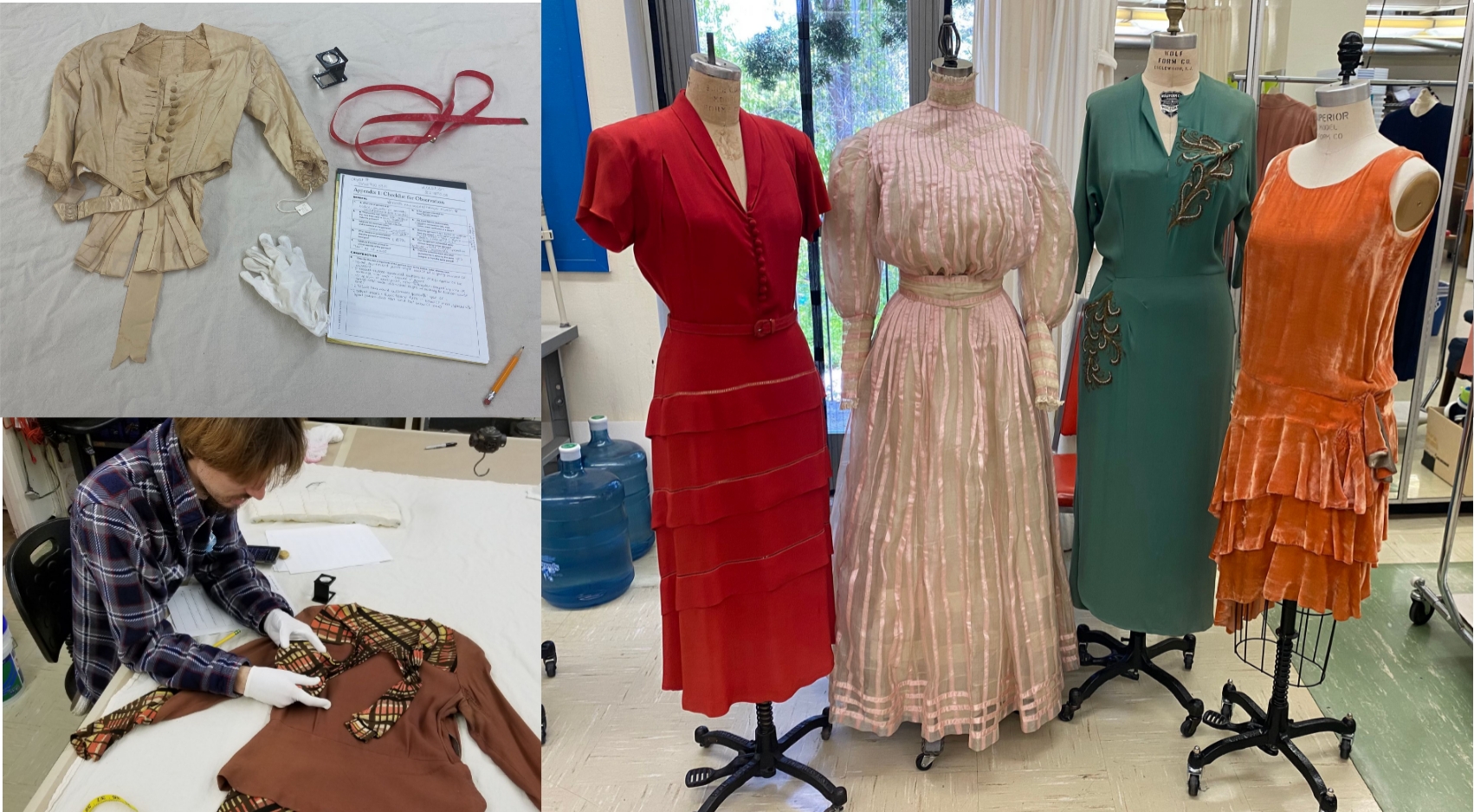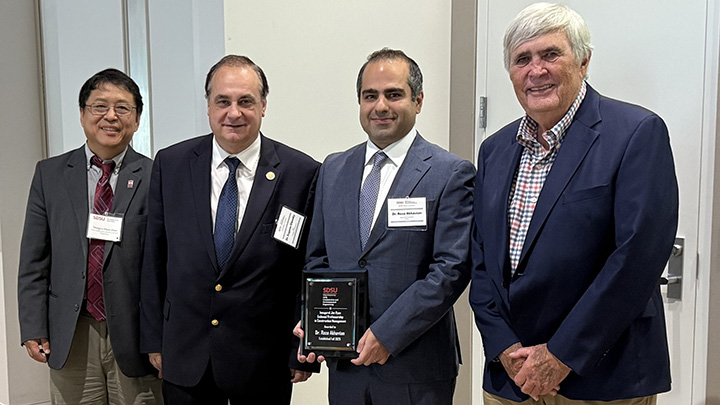School of Theatre, Television, and Film Preserves the Alicia Annas Historical Costume Collection
Head of Costume Design and Technology Professor Denitsa Bliznakova renews research and preservation of the collection of over 1,000 historical garments and costume accessories.

The Alicia Annas Historic Costume Collection (AAHCC), housed in San Diego State University’s School of Theatre, Television, and Film, comprises over 1,000 historical garments and costume accessories dating back as far as the 1860s. Due to a lack of resources, work into the collection was halted for over 15 years.
Now, through the work of head of costume design and technology professor Denitsa Bliznakova and costume shop manager Teri Tavares, the collection functions as a source of hands-on study and primary research for costume faculty, staff, and students. The AAHCC is an impressive reserve, said Bliznakova.
“This collection is an invaluable resource for the study of historical costumes,” said Bliznakova. “It is in my purview now to make it available to not only our SDSU students but to national costume organizations as well.”
Bliznakova works with the help of two students, graduate assistant Regan McKay and undergraduate fellow Jacob Cooper. McKay has spent more than 200 hours with the collection, working on research, preservation, and organization. Access to the AAHCC has transformed her education here at SDSU.
“Access to these objects allowed my work to be better historically informed, and I realized the immense educational and creative value created when the fields of costume design and historic costumes are integrated,” said McKay. “I sincerely hope the AAHCC will receive more funding and dedicated graduate assistants in the future so it can continue to be an invaluable resource to SDSU students and hopefully, eventually to the community as a whole."
It is a stunning repository of historical garments which Bliznakova and Tavares work hard to preserve by researching, cataloging, and digitizing into a web-based database. Students help complete research into the collection's objects as well as acquire knowledge in the photographing, conserving, and storing of these historical objects.
“The discoveries made with some of the garments have been exciting and even surprising in some instances,” Bliznakova said. “It is like uncovering a treasure chest with each valuable piece carrying a secret message.”
The creation of an accurate, accessible, and organized online database, has made the AAHCC a better hands-on resource to costume students and an aid in visual research performed by students, faculty, staff, professionals and the public.



